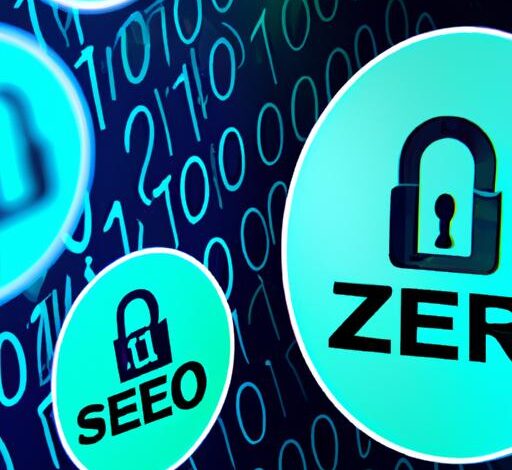Zero Trust Identity and Access Management: Fortifying Cybersecurity in the Digital Age

Introduction
In today’s interconnected world, where cyber threats are becoming increasingly sophisticated, safeguarding sensitive information and maintaining secure access is paramount. This is where zero trust identity and access management (ZTIAM) steps in as a robust framework to fortify cybersecurity defenses. But what exactly is ZTIAM, and why is it of utmost importance in modern cybersecurity?
Definition of Zero Trust Identity and Access Management (ZTIAM)
Zero Trust Identity and Access Management (ZTIAM) is a security model that adopts a proactive and comprehensive approach to safeguarding digital assets. Unlike traditional security models that rely on perimeter-based defenses, ZTIAM assumes that no user or device should be inherently trusted, even if they are within the network boundaries. Instead, ZTIAM enforces strict authentication, authorization, and continuous monitoring measures to ensure secure access to resources.
Importance of ZTIAM in Modern Cybersecurity
With the proliferation of cloud services, remote work arrangements, and the increasing complexity of cyber threats, traditional security measures are no longer sufficient. ZTIAM emerges as a crucial solution in this landscape, providing enhanced protection against advanced persistent threats (APTs), insider attacks, and unauthorized access attempts. By implementing ZTIAM, organizations can establish granular control over user privileges, reduce the attack surface, and mitigate the risks associated with compromised credentials.
Overview of the Article’s Purpose and Structure
Throughout this article, we will delve deeper into the world of ZTIAM, exploring its key components, implementation strategies, and the advantages it brings to the table. We will also address the challenges organizations may encounter when adopting ZTIAM and provide actionable insights to overcome them. By the end, you will have a comprehensive understanding of ZTIAM and how it can bolster your cybersecurity defenses.
Now, let’s move forward and explore the fundamental principles and concepts behind Zero Trust in the next section.
Understanding Zero Trust
Explanation of the Zero Trust Security Model
In a world where cyber threats are ever-evolving, the Zero Trust security model stands as a paradigm shift in protecting digital assets. Unlike traditional security models that assume trust once a user or device is within the network perimeter, Zero Trust challenges this notion. It operates on the principle of “never trust, always verify.” Every user, device, and network component must undergo continuous authentication and authorization, regardless of their location or network boundaries.
Key Principles and Concepts of Zero Trust Approach
Zero Trust encompasses several key principles and concepts that form the foundation of its security approach:
-
Microsegmentation: Zero Trust promotes the practice of dividing networks into smaller, isolated segments, limiting lateral movement in the event of a breach. By compartmentalizing resources, organizations can minimize the potential impact of a security incident.
-
Least Privilege: Zero Trust adopts the principle of least privilege, ensuring that users and devices only have access to the resources necessary for their roles and responsibilities. This reduces the attack surface and minimizes the potential damage caused by compromised credentials.
-
Continuous Monitoring: Zero Trust emphasizes continuous monitoring of user behavior, device health, and network activity. This enables organizations to detect anomalies, suspicious activity, and potential security breaches in real-time, allowing for immediate response and mitigation.
Benefits of Implementing Zero Trust in Identity and Access Management
Implementing Zero Trust in identity and access management brings forth a multitude of benefits:
-
Enhanced Security: By adopting a Zero Trust approach, organizations can significantly strengthen their security posture. The continuous authentication, authorization, and monitoring safeguards against unauthorized access attempts, insider threats, and lateral movement within the network.
-
Granular Access Control: Zero Trust enables organizations to establish granular access controls, ensuring that users and devices only have access to the resources they genuinely need. This reduces the risk of data breaches and limits the potential damage caused by compromised accounts.
-
Improved Visibility and Compliance: With Zero Trust, organizations gain enhanced visibility into user activity, device health, and network traffic. This not only aids in detecting and mitigating potential threats but also assists in meeting regulatory compliance requirements.
As we move forward, we will explore the key components of Zero Trust Identity and Access Management, shedding light on the authentication, authorization, and data/application security measures involved.
Components of Zero Trust Identity and Access Management
To effectively implement Zero Trust Identity and Access Management (ZTIAM), organizations must focus on various crucial components. These components encompass user authentication and authorization, device authentication and authorization, as well as securing data and applications.
User Authentication and Authorization
1. Multi-factor Authentication (MFA)
Multi-factor authentication (MFA) adds an extra layer of security by requiring users to provide multiple forms of verification. This can include something the user knows (such as a password), something they possess (like a token or smart card), or something inherent to them (such as biometric data). By implementing MFA, organizations can significantly reduce the risk of unauthorized access, even if credentials are compromised.
2. Role-based Access Control (RBAC)
Role-based access control (RBAC) is a method of granting permissions based on specific job functions or roles within an organization. By assigning users to appropriate roles, RBAC ensures that individuals only have access to the resources necessary for their responsibilities. This granular approach minimizes the potential for privilege abuse and limits the impact of a security breach.
3. Privileged Access Management (PAM)
Privileged access management (PAM) focuses on securing and controlling privileged accounts, which possess elevated privileges within an organization’s network. By implementing PAM solutions, organizations can enforce strict controls, monitor privileged user activities, and prevent unauthorized access attempts. This helps mitigate the risks associated with insider threats and external attackers targeting privileged accounts.
Device Authentication and Authorization
1. Network Access Control (NAC)
Network access control (NAC) verifies the identity and security posture of devices attempting to connect to a network. NAC solutions enforce policies that ensure only trusted and compliant devices are granted access. By implementing NAC, organizations can prevent unauthorized devices from connecting to the network, reducing the risk of malware infections and unauthorized access attempts.
2. Endpoint Security Measures
Endpoint security measures involve implementing robust security controls on individual devices, such as laptops, smartphones, and IoT devices. This includes installing antivirus software, enabling firewalls, and regularly patching and updating software. By ensuring endpoints are secure, organizations can decrease the likelihood of compromised devices becoming entry points for attackers.
Securing Data and Applications
1. Data Encryption and Tokenization
Data encryption and tokenization techniques are employed to protect sensitive information at rest, in transit, and in use. Encryption scrambles data into unreadable form, while tokenization substitutes sensitive data with non-sensitive placeholders. These techniques ensure that even if data is intercepted or accessed unlawfully, it remains unintelligible and unusable.
2. Application-level Access Controls
Application-level access controls involve implementing granular permissions within applications to restrict user access to specific features, data, or functionalities. By enforcing fine-grained access controls, organizations can prevent unauthorized actions, limit the impact of data breaches, and ensure compliance with regulatory requirements.
In the next section, we will explore the implementation strategies of Zero Trust Identity and Access Management, allowing organizations to establish a robust security framework.
Implementing Zero Trust Identity and Access Management
As organizations recognize the significance of Zero Trust Identity and Access Management (ZTIAM) in fortifying their cybersecurity defenses, it becomes crucial to understand the steps involved in implementing this robust framework. Let’s explore the key components and strategies organizations should consider when adopting ZTIAM.
Assessing Current Security Posture and Identifying Vulnerabilities
Before embarking on the implementation journey, it is essential to conduct a comprehensive assessment of the organization’s current security posture. This involves identifying existing vulnerabilities, evaluating access controls, and assessing the effectiveness of current security measures. Through this evaluation, organizations can gain insights into their strengths and weaknesses, allowing them to tailor their ZTIAM implementation accordingly.
Designing a Zero Trust Architecture Tailored to Organizational Needs
Once the vulnerabilities are identified, organizations can begin designing a Zero Trust architecture that aligns with their specific requirements. This involves establishing granular access policies, segmenting networks, and implementing robust authentication mechanisms. By adopting a risk-based approach, organizations can design a ZTIAM framework that strikes the right balance between security and usability, ensuring protected access to critical resources.
Deploying Necessary Technologies and Tools for ZTIAM
Implementing ZTIAM necessitates the deployment of appropriate technologies and tools that support the framework’s principles. This may include multi-factor authentication (MFA) solutions, role-based access control (RBAC) systems, and privileged access management (PAM) tools. It is crucial to select reliable and scalable solutions that integrate seamlessly with existing infrastructure while providing the necessary security controls.
Establishing Policies and Procedures for Ongoing Management and Maintenance
As ZTIAM is not a one-time implementation, organizations must establish clear policies and procedures for ongoing management and maintenance. This involves regular monitoring of user access, continuous evaluation of security controls, and prompt response to any suspicious activities. By maintaining a proactive approach to ZTIAM, organizations can ensure the sustained effectiveness of their cybersecurity defenses.
With these implementation strategies in place, organizations can successfully adopt Zero Trust Identity and Access Management, bolstering their security posture and mitigating potential risks. In the next section, we will explore the advantages and challenges associated with ZTIAM, shedding light on its impact on organizational security.
Advantages and Challenges of Zero Trust Identity and Access Management
Zero Trust Identity and Access Management (ZTIAM) offers a multitude of advantages in fortifying cybersecurity defenses. By adopting this proactive approach, organizations can enhance security, gain better visibility and control over user access, and mitigate potential risks. However, implementing ZTIAM also comes with its own set of challenges and considerations. Let’s explore these aspects in detail.
Enhanced Security and Protection Against Cyber Threats
ZTIAM provides a robust security framework that helps organizations tackle the ever-evolving landscape of cyber threats. By implementing strict authentication and continuous monitoring measures, ZTIAM ensures that only authorized users and devices gain access to sensitive resources. This approach significantly reduces the attack surface and helps prevent unauthorized access attempts, insider attacks, and the exploitation of compromised credentials. With ZTIAM, organizations can establish a strong line of defense against advanced persistent threats (APTs) and other sophisticated cyber attacks.
Improved Visibility and Control over User Access
One of the key benefits of ZTIAM is its ability to offer organizations better visibility and control over user access. By implementing granular access controls and role-based access control (RBAC) mechanisms, organizations can ensure that users are granted access only to the resources they need to perform their designated tasks. This not only minimizes the risk of unauthorized access but also simplifies the process of managing user privileges. ZTIAM enables organizations to monitor and audit user activities in real-time, allowing them to detect and respond to suspicious behavior promptly.
Potential Challenges and Considerations in Implementing ZTIAM
While ZTIAM offers substantial benefits, it’s important to acknowledge the potential challenges organizations may face when implementing this framework. Some common considerations include the complexity of integration with existing systems, the need for proper training and education for employees, and the potential disruption to workflows during the transition. Additionally, organizations must carefully plan and execute the implementation process to avoid creating unnecessary friction for users. By addressing these challenges proactively, organizations can overcome potential obstacles and maximize the benefits of ZTIAM.
In the next section, we will discuss the practical steps involved in implementing ZTIAM. Stay tuned to gain insights into designing a tailored Zero Trust architecture for your organization.
Conclusion
In an era where cybersecurity threats loom large, organizations must embrace innovative approaches to protect their digital assets. Zero Trust Identity and Access Management (ZTIAM) emerges as a powerful framework that fortifies cybersecurity defenses and mitigates the risks associated with unauthorized access and compromised credentials.
By adopting ZTIAM, organizations can establish a proactive security posture that revolves around the principles of continuous authentication, strict authorization, and comprehensive monitoring. This approach ensures that no user or device is inherently trusted, reducing the attack surface and providing enhanced protection against advanced persistent threats (APTs) and insider attacks.
Implementing ZTIAM brings a multitude of benefits. It enhances visibility and control over user access, allowing organizations to grant privileges on a need-to-know basis. This granular control minimizes the chances of unauthorized access and limits the potential damage caused by compromised accounts. Moreover, ZTIAM enables organizations to secure their data and applications through encryption, tokenization, and application-level access controls, safeguarding critical information from unauthorized disclosure or alteration.
However, adopting ZTIAM is not without its challenges. Organizations may face resistance from employees accustomed to traditional security models, and the implementation process can be compleOvercoming these hurdles requires a comprehensive assessment of the current security posture, designing a tailored ZTIAM architecture, and deploying the necessary technologies and tools for seamless integration.
In conclusion, Zero Trust Identity and Access Management (ZTIAM) is a vital component of modern cybersecurity. By implementing ZTIAM, organizations can bolster their defenses, minimize the risk of data breaches, and ensure the integrity of their digital assets. Embrace the principles of Zero Trust, and embark on a journey towards a more secure and resilient future.
Now that you have a solid understanding of ZTIAM, it’s time to take action and prioritize the implementation of this revolutionary framework in your organization. Safeguard your digital resources and fortify your cybersecurity defenses with Zero Trust Identity and Access Management.
Conclusion: So above is the Zero Trust Identity and Access Management: Fortifying Cybersecurity in the Digital Age article. Hopefully with this article you can help you in life, always follow and read our good articles on the website: pet.top5dalat.com





